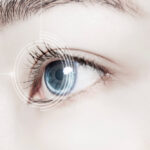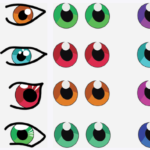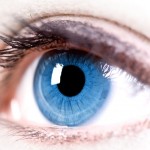Contact Lens Myths You Shouldn’t Take Too Seriously

Many people get discouraged about wearing contact lenses just because of rumours that aren’t even totally true. Read on to know some popular misconceptions and understand why they shouldn’t stop you from wearing contacts (unless advised by an eye doctor):
Kids and old people shouldn’t use contact lenses.
This is 100% false. As long as they’re using the right type of lenses, children and seniors can definitely enjoy the benefits of contacts.
Contact Lenses for Kids
These are common reasons why some kids with vision problems should wear contact lenses:
- The child is an athlete, requiring perfect peripheral vision.
- The child feels insecure when wearing glasses at school.
- The infant has congenital cataracts.
Unless the child’s still an infant and he suffers from congenital cataracts, it’s never a good idea to give contact lenses to a kid who’s still not mature enough to follow more complicated instructions. That’s why most parents let their children use contacts at eight to 10 years old. That age range is usually easier to guide when it comes to the dos and don’ts of using lenses.
Regarding the right lens type for kids, soft contacts are the best options since they’re more comfortable to wear. Even better, give disposable contact lenses to let the child skip the responsibility of cleaning and storage. Disposables don’t need maintenance at all; just throw each lens after use.
Of course, there are children who really shouldn’t wear contact lenses. But, that’s not because of their young age; we’re talking about kids who experience seasonal allergies. If it’s already a struggle for us to stop touching our eyes when there’s irritation, what more for an innocent little child?
Contact Lenses for the Elderly
Older people can absolutely wear contact lenses in general, but there are several factors to consider before letting one use a pair. Here are some examples:
- Eyelids’ elasticity (efficiency of blinking and tear film distribution)
- Tear film (severity of dry eyes)
- Cornea (flow of oxygen to the eyes and speed of healing, in case of irritation or abrasion)
- Possibility of pterygia and pingueculae (positioning or fitting of the contact lenses)
- Strength of the hand joints (ability to put in contact lenses alone)
- Possible side effects of medications (dry eyes)
Now, for the types of contact lenses suitable for seniors, the silicone hydrogel, hyper-Dk GP (gas permeable), multifocal, or toric should have these characteristics:
- Sufficient transmission of oxygen
- Extended or continuous wear
- Slightly thicker for easier handling (alternative: using a lens applicator and remover)
- Tinted
Only eyeglasses can guarantee vision correction.
This is absolutely untrue. A lot of contact lenses are specifically designed for correcting refractive errors. Their form and material are made for bending light correctly to help the wearer see clearly.
Find out the refractive errors that can be corrected by contact lenses.
Myopia and Hyperopia
Commonly referred to as nearsightedness and farsightedness, myopia and hyperopia are better handled with soft contacts. Whether the lenses are standard or silicone hydrogel, as long as they have the right structure, you won’t be struggling with blurred images anymore.
Spherical-shaped lenses are ideal for correcting myopia and hyperopia. Their whole optical section only has one power to avoid having weaker parts that can easily affect vision quality.
Astigmatism
Toric contact lenses differ from the spherical type in terms of the power used. The meridians of each toric work with different powers.
Not only that but toric lenses can also rotate to perfectly match the cornea’s shape. This is crucial since astigmatism is characterized by an irregularly shaped cornea. The irregular curve of the cornea affects the refraction of light, causing vision problems.
Presbyopia
This condition usually occurs due to old age. The actual lens of the eye becomes thicker, reducing flexibility. That leads to difficulty focusing on objects.
Multifocal and bifocal contact lenses are highly recommended for people with presbyopia. They’re similar to toric lenses except for the larger coverage. Their power is located in different areas.
Those two types of contacts can be:
- soft lenses
- rigid gas permeable (RGP) lenses
- hybrid lenses
- disposable lenses
- silicone hydrogel
- extended wear
Contact lenses make your eyes vulnerable to different infections.
This only happens when you use contact lenses carelessly. If you’re always careful all the way from the buying process up to regular usage and maintenance, you’ll never experience irritation.
These are some factors that can trigger infections when you wear contact lenses:
- broken lens
- incorrect use of hydrogen peroxide lens solution
- allergic reaction to boric acid or sodium chloride lens solution
- wrong handling and maintenance of lens cases
- wearing lenses too long
Meanwhile, the following conditions or infections can be triggered by the aforementioned factors:
- itchiness
- painful blinking
- sensitivity to light
- stuck lens underneath the eyelid
- headache
- burning or stinging feeling in the eyes
- corneal damage
- excessive tears
- swelling
- throbbing pain
- temporary blurred vision
- red eyes
- Acanthamoeba keratitis
- conjunctivitis
- hypoxia
- blindness
Check what contact lenses we offer:
Daily disposable contact lenses
Contact lenses without prescription
Contact lens maintenance will take too much of your time.
Cleaning and storing contact lenses, including their case, only takes 30 minutes or less in general. Besides, disposable contacts exist. You can choose them if you’re too busy.
Anyway, take a look at these tips to ensure that the cleaning process won’t take too long:
- All the towels you’ll use must be lint-free to avoid leaving residues.
- Always check if the case is empty before cleaning it to avoid dealing with wasted lenses.
- Shake the case upside down to remove excess solution, reducing drying time.
- Spray contact lens solution all over the case to quickly disinfect its sections.
- Rub the case with a clean toothbrush to efficiently remove germs.
- A thorough cleaning can be done once a week only.
Conclusion
Common misconceptions about contact lenses include adults-only usage, inability to correct vision, easier exposure to infections, and time-consuming maintenance. The truth is they’re actually effective for both kids and the elderly, vision correction, and busy people. Also, infections can only happen if you use, clean, and store contact lenses incorrectly.
Where to Buy Different Types of Contact Lenses
Contact Lenses 4 Us have a wide range of contact lenses for different needs. For example, we have the Acuvue 1-Day Define Natural Shimmer which can be used by younger users as well. Also, for the elderly, we include the Air Optix® Plus Hydraglyde Multifocal. Lastly, the Biofinity contact lenses are for nearsighted and farsighted people. You can order all of them without a prescription. We ship worldwide!
You will also like:
Eye Care And Contact Lens Maintenance Guide For Travellers

ACUVUE OASYS contact lenses no prescription
Acuvue Oasys: Ultimate Comfort with HYDRACLEAR PLUS Discover the comfort of Acuvue Oasys contact lenses, empowered by HYDRACL...

Freshlook One Day contact lenses
Contact lens wearers who opt for daily colored disposable contacts should consider Freshlook One Day contact lenses. Made by ...
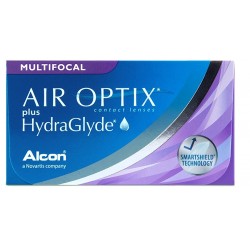
AIR OPTIX® Plus Hydraglyde MULTIFOCAL (3)
Air Optix Plus HydraGlyde Multifocal 3 contact lenses If you’re looking for a fantastic alternative to corrective glasses, ...
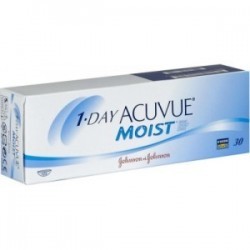
1-DAY ACUVUE MOIST FOR ASTIGMATISM
People who want to replace their contacts daily can opt for 1-Day Acuvue Moist for Astigmatism for their disposable wear. Hig...


